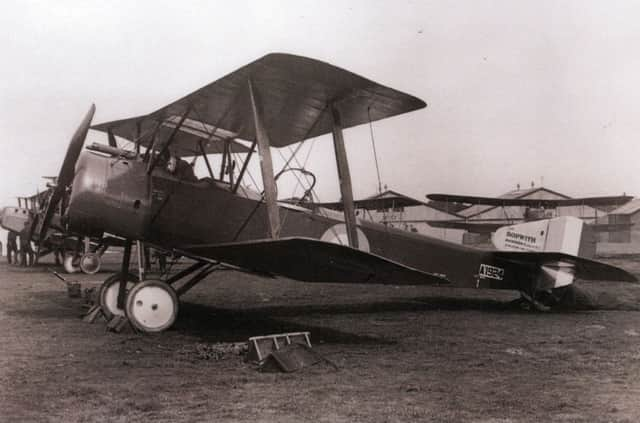Replica First World War biplane close to takeoff


The 12-strong team, aged between their mid-60s and 90, had no experience of plane-building when they began the formidable task in a small workshop in the East Lothian village of East Fortune, near the National Museum of Flight.
FOLLOW US
SCOTSMAN TABLET AND MOBILE APPS
Now after 13 years, they hope to have the Sopwith 1½ Strutter in the air by the autumn – the centenary of the original plane’s maiden flight.
Advertisement
Hide AdThe Aviation Preservation Society of Scotland (APSS) needs a further £15,000 to pay for the remaining materials needed to get if off the ground.
The team includes a retired teacher, a former gamekeeper and several with engineering backgrounds.
Among them is fundraising secretary John Guy, a 76-year-old retired orthopaedic consultant from North Berwick.
He said: “The stuff we can’t get hold of we have to make, but I love working with my hands. I was always interested in aeroplanes. I was a glider pilot for some years. ”
Joint project leader Bernard Ginty, 83, a former electrical engineer from North Berwick, has been retired for 15 years and involved with the Strutter for 12.
He has experience of working with Cold War-era nuclear bombers but had never tried anything like this before.
Advertisement
Hide AdHe said: “One of my wife’s friends tells her, ‘You are lucky your husband has got all these interests. My husband just hangs about the house and I can’t get rid of him’.
“My wife has to make an appointment to see me.”
Of more than 5,000 Sopwith 1½ Strutters ever built, just four are thought to have survived. The first British-designed plane of its kind, it was used as a bomber, for reconnaissance and as a fighter.
Advertisement
Hide AdThe model was chosen by the team because of its strong links to East Fortune, where it was based from 1916, and has been created from original plans.
Because many of the parts are no longer available, most of the plane has been handcrafted by the men from wood and metal.
“The wood and metal has been extraordinarily expensive, but fortunately the labour has been free,” added Mr Guy.
The plane has cost around £40,000 so far and the APSS has sold some of its treasured possessions to fund it.
They have even been in touch with military aircraft restoration firm The Vintage Aviator Ltd, which is owned by film director Peter Jackson, in a bid to get more support.
The group still needs to test the undercarriage, complete the cockpit, cover and paint the plane and then gain a flight certificate. Before it is declared airworthy, a qualified inspector will also take it for a test flight.
Advertisement
Hide AdThe plane was originally set to be an exhibit in the National Museum of Flight but when museum bosses decided they didn’t want working aircraft, the men decided to continue with the project.
John White, 82-year-old chairman of the APSS and a qualified pilot, said: “We thought, ‘We are not going to build a plane that doesn’t fly’ so we carried on our own.”
Advertisement
Hide AdThe former aircraft company owner, whose other hobbies include restoring classic Rolls Royce cars, said he hoped to be able to fly the plane himself.
He added: “It’s been an interesting exercise and it’s good for the guys. All of them are retired, and this has got them out of bed.”
The project will be the subject of a documentary directed by Gerard Lohan, director of Edinburgh-based film company Daemon Productions.
The Sopwith 1½ Strutter was the first British aircraft to enter service with a synchronised machine gun, that enabled it to shoot through its propeller.